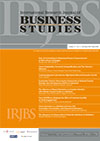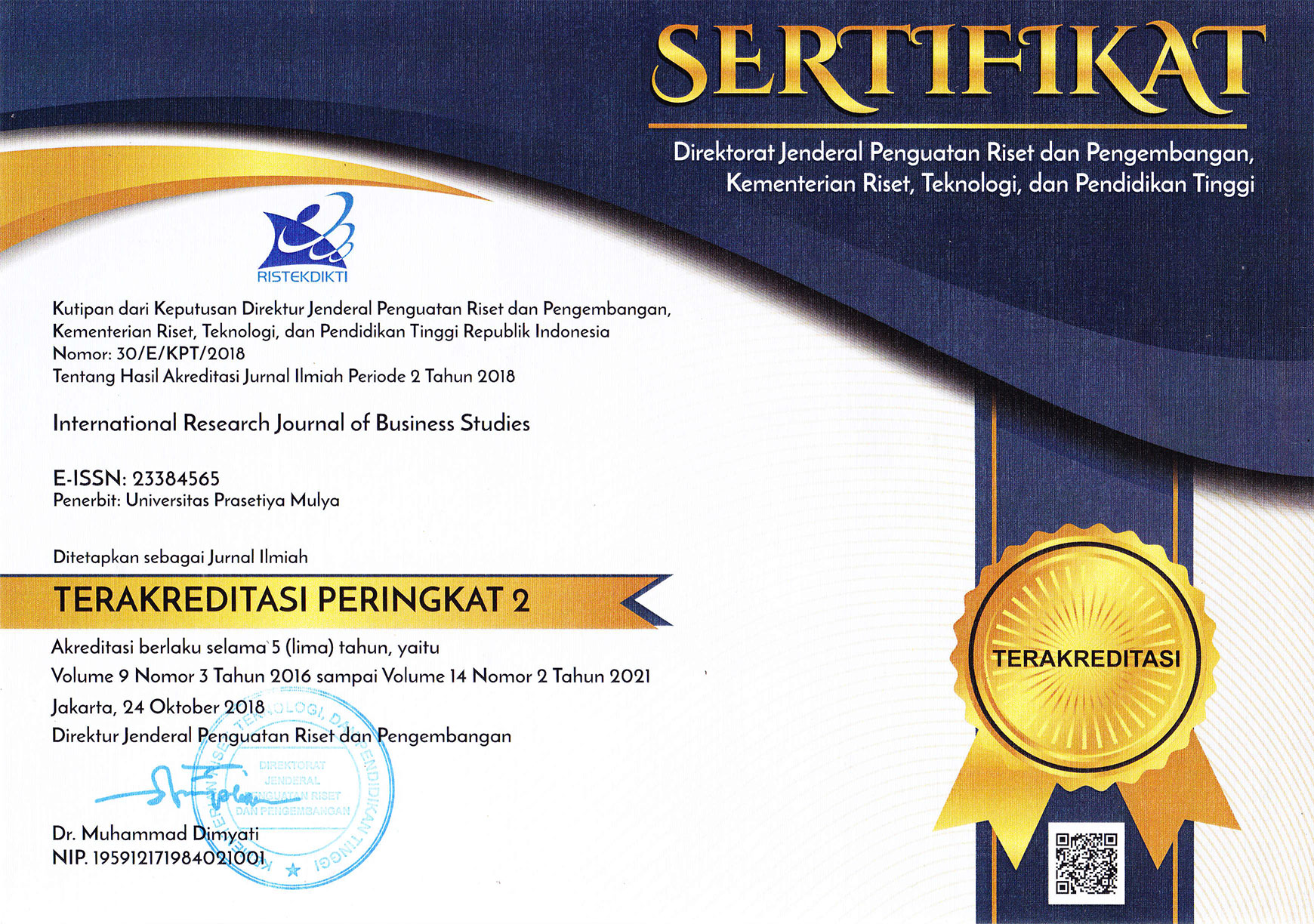Sustainable Tourism Observatories Framework at National Tourism Strategic Area Development (KSPN) in Indonesia
DOI:
https://doi.org/10.21632/irjbs.17.3.251-266Keywords:
Tourism Ecosystem, Sustainable Tourism, National Tourism Strategic Area (KSPN)Abstract
This study aims to establish a framework that integrates planning and implementation programs for sustainable tourism development in Indonesia, providing a guide for stakeholders to unify understanding and drive policy agreements. The framework emphasizes concise, transparent, measurable, and adjustable principles for monitoring Sustainable Tourism Development (STD) guidelines. Using methodologies including surveys, case studies, comparative studies, time and motion analysis, and documentation analysis, this research identifies key elements and characteristics of sustainable tourism phenomena. The findings highlight the critical role of stakeholders in monitoring sustainable tourism through periodic reporting processes led by the Sustainable Tourism Observatory (STO). Government bodies, academic institutions, and community stakeholders collaboratively develop sustainable travel destinations, fostering accelerated tourism growth and sustainability in Indonesia.
References
Amerta, I., Sara, I., & Bagiada, K. (2018). Sustainable Tourism Development. International Research Journal of Management, IT & Social Sciences, 5 (2), 248 - 254.
Bachmann, N., Tripathi, S., Brunner, M., & Jodlbauer, H. (2022). The Contribution of Data-Driven Technologies in Achieving the Sustainable Development Goals. Sustainability, 14 (5). https://doi.org/https://doi.org/10.3390/su14052497
Bertocchi , D., Camatti, N., & Van der Borg, J. (2020). Tourism Observatories for monitoring MED destinations performance. The case of ShapeTourism project. Tourism, 68 (4), 466 - 481. https://doi.org/https://doi.org/10.37741/t.68.4.7
Calderon-Vargas, F., Asmat-Campos, D., & Chavez-Arroyo, P. (2021). Sustainable tourism policies in Peru and their link with renewable energy: analysis in the main museums of the Moche route. Heliyon, 7 (10). https://doi.org/https://doi.org/10.1016/j.heliyon.2021.e08188
Cristofaro, M., Leoni, L., & Baiocco, S. (2020). Promoting Co-evolutionary Adaptations for Sustainable Tourism: The “Alpine Convention” Case. Tourism Planning & Development, 17 (3). https://doi.org/https://doi.org/10.1080/21568316.2019.1600162
Cuesta, D., Escobar, M., & Ureta, I. (2020). Comparative analysis of tourism observatories for their implementation in the City of Portoviejo-Manabí- Ecuador. Espacios, 41 (45)(108 - 119). https://doi.org/DOI: 10.48082/espacios-a20v41n45p10
Fandeli, C., & Muhamad, M. (2021). Pembangunan Kota Hijau. Yogyakarta: UGM Press.
Friberg, J., & Wästerlid, E. (2022). Supplier Selection – A brick to attain sustainable tourism. A case study on what influences a Sri Lankan hotel chain’s local supplier selection. A Bachelor Thesis. Kristianstad University.
Gianie, G. (2023). Kebangkitan Pariwisata: Pariwisata Dunia Bangkit, tetapi Belum Sepenuhnya Pulih. Retrieved July 07, 2023, from https://www.kompas.id/baca/riset/2023/01/24/pariwisata-dunia-bangkit-tapi-belum-sepenuhnya-pulih
GSTC. (2022). What is Sustainable Tourism? Retrieved July 07, 2023, from https://www.gstcouncil.org/what-is-sustainable-tourism/
Gúčik , M., & Marciš, M. (2017). Sustainable Tourism Development In The Tatra National Park. Economics And Environment, 61 (2).
Hautamäki, I. (2021). Sustainable Tourism Opportunities in European Smart Cities. Bachelor’s Thesis. Bachelor of Hospitality Management. Haaga-Helia University of Applied Sciences.
Ika, I. (2021, September 30). Menparekraf Sebut Pentingnya Keterlibatan STO dalam Mendukung Pembangunan Wisata Berkelanjutan. Retrieved from https://ugm.ac.id/: https://ugm.ac.id/id/berita/21748-menparekraf-sandiaga-uno-sebut-pentingnya-keterlibatan-sto-mendukung-pembangunan-wisata-berkelanjutan/
INSTO. (n.d.). World Tourism Organization. International Network of Sustainable Tourism Observatories. Retrieved 07 09, 2023, from available in: https://www.unwto.org/insto/
Jamrozy, U. (2007). Marketing of tourism: a paradigm shift toward sustainability. International Journal of Culture, Tourism and Hospitality Research, 1 (2), 117 - 130. https://doi.org/https://doi.org/10.1108/17506180710751669
JDIH Kemenparekraf. (n.d.). Peraturan Menteri Pariwisata dan Ekonomi Kreatif/Kepala Badan Pariwisata dan Ekonomi Kreatif Nomor 9 Tahun 2021 tentang Pedoman Destinasi Pariwisata Berkelanjutan. Retrieved from https://jdih.kemenparekraf.go.id: https://jdih.kemenparekraf.go.id/katalog-712-Peraturan%20Menteri.html
Lemy, D., Pramezwary, A., Teguh, F., & Pramono, R. (2019). How sustainable is our destination? A snap-shot from the First Indonesia Sustainable Tourism Destination Award. African Journal of Hospitality, Tourism and Leisure, 8 (1).
Muhamad, M., & Prima, A. (2016). Implementation Of Sustainable Tourism Destination Development Achievements. Asia Tourism Forum 2016 – The 12th Biennial Conference of Hospitality and Tourism Industry in Asia (ATF-16). Atlantis Press.
Muhamad, M., & Sopjan, D. (2022). Religious, Cultural, and Artistic Tourism in Sustainable Tourism. Formosa Journal of Multidisciplinary Research (FJMR), 1 (1), 13 - 28.
Nelson, J., Jenkins, B., & Gilbert, R. (2015). Business And The Sustainable Development Goals. Building Blocks For Success At Scale. Harvard Kennedy School.
Niedziółka, I. (2012). Sustainable Tourism Development. Regional Formation and Development Studies, 8 (3), 157 - 166. https://doi.org/https://doi.org/10.15181/rfds.v7i2.2371
Nocca, F., Bosone, M., De Toro, P., & Girard, L. F. (2023). Towards the Human Circular Tourism: Recommendations, Actions, and Multidimensional Indicators for the Tourist Category. Sustainability, 15 (3). https://doi.org/10.3390/su15031845
Samier, Q., Hamman, P., & Stejskal , J. (2021). Perceptions and Realities of Sustainable Tourism Development in a Cross-Border Context: A Case Study of the Upper Rhine Valley (France and Germany) (Master of Arts Thesis ed.). Strasbourg: University of Strasbourg, France, University of Olomouc, Czech Republic.
Sandhu, S., & Berse, K. (2022). A System Of Systems Approach To Managing Coastal Cities: Prospects For Enhancing Sustainable Tourism And Disaster Risk Management In The Philippines. Social Science Asia, 8 (3), 34 - 58.
Scuttari, A., Ferraretto, V., Dibiasi, A., Isetti, G., Erschbamer, G., Sartor, S., . . . Rachewiltz, M. D. (2020). The Sustainable Tourism Observatory of South Tyrol (STOST) First Annual Progress Report. Eurac Research.
Shettima, K. (2016). Achieving the Sustainable Development Goals in Africa: Call for a Paradigm Shift. African Journal of Reproductive Health, 20 (3). https://doi.org/https://doi.org/10.29063/ajrh2016/v20i3.2
Sutopo, A., Arthati, D. F., & Rahmi, U. A. (2014). Kajian Indikator Sustainable Development Goals (SDGs). Jakarta: Badan Pusat Statistik.
Turner, C. (2017). International tourist arrivals grow 4% to 1.23bn in 2016. Retrieved July 06, 2023, from https://www.trbusiness.com/regional-news/international/international-tourists-grow-4-to-1-23bn-in-2016/114162
UNEP. (2020). 10YFP - 10 Year Framework of Programmes on Sustainable Consumption and Production Patterns. Retrieved July 07, 2023, from https://www.unep.org/explore-topics/resource-efficiency/what-we-do/one-planet-network/10yfp-10-year-framework-programmes
UNWTO. (2011). Tourism Towards 2030: Global Overview. Retrieved July 06, 2023, from https://www.unwto.org/archive/global/press-release/2011-10-11/international-tourists-hit-18-billion-2030
Widowati, S., Ginaya, G., & Triyuni, N. (2019). Penta Helix Model to Develop Ecotourism: Empowering the Community for Economic and Ecological Sustainability. International Journal of Social Sciences and Humanities, 3 (2), 31 - 46. https://doi.org/https://doi.org/10.29332/ijssh.v3n2.288
Widyawati, R. L. (2019). Green Building Dalam Pembangunan Berkelanjutan Konsep Hemat Energi Menuju Green Building Di Jakarta. Kalibrasi, 2 (1). https://doi.org/https://doi.org/10.37721/kal.v13i0.463
World Tourism Organization. (2004). Indicators of Sustainable Development for Tourism Destination: A Guide Book. Madrid: World Tourism Organization.
Anderson, C. C., Denich, M., Warchold, A., Kropp, J. P., & Pradhan, P. (2022). A systems model of SDG target influence on the 2030 Agenda for Sustainable Development. Sustainability Science, 17(4), 1459–1472. https://doi.org/10.1007/s11625-021-01040-8
Biggeri, M., & Cuesta, J. A. (2021). An Integrated Framework for Child Poverty and Well-Being Measurement: Reconciling Theories. Child Indicators Research, 14(2), 821–846. https://doi.org/10.1007/s12187-020-09774-0
Downloads
Submitted
Accepted
Published
How to Cite
Issue
Section
License
Copyright (c) 2024 Muhamad Muhamad, Muhammad Baiquni, Wiryanto Wiryanto (Author)

This work is licensed under a Creative Commons Attribution-ShareAlike 4.0 International License.
Journal Author(s) Rights
For IRJBS to publish and disseminate research articles, we need publishing rights (transferred from the author(s) to the publisher). This is determined by a publishing agreement between the Author(s) and IRJBS. This agreement deals with the transfer or license of the copyright of publishing to IRJBS, while Authors still retain significant rights to use and share their own published articles. IRJBS supports the need for authors to share, disseminate and maximize the impact of their research and these rights, in any databases.
As a journal Author, you have rights to many uses of your article, including use by your employing institute or company. These Author rights can be exercised without the need to obtain specific permission. Authors publishing in IRJBS journals have comprehensive rights to use their works for teaching and scholarly purposes without needing to seek permission, including:
- use for classroom teaching by Author or Author's institution and presentation at a meeting or conference and distributing copies to attendees;
- use for internal training by the author's company;
- distribution to colleagues for their research use;
- use in a subsequent compilation of the author's works;
- inclusion in a thesis or dissertation;
- reuse of portions or extracts from the article in other works (with full acknowledgment of the final article);
- preparation of derivative works (other than commercial purposes) (with full acknowledgment of the final article);
- voluntary posting on open websites operated by the author or the author’s institution for scholarly purposes,
(But it should follow the open access license of Creative Common CC-by-SA License).
Authors/Readers/Third Parties can copy and redistribute the material in any medium or format, as well as remix, transform, and build upon the material for any purpose, even commercially. Still, they must give appropriate credit (the name of the creator and attribution parties (authors' detail information), a copyright notice, an open access license notice, a disclaimer notice, and a link to the material), provide a link to the license, and indicate if changes were made (Publisher indicates the modification of the material (if any) and retain an indication of previous modifications.
Authors/Readers/Third Parties can read, print and download, redistribute or republish the article (e.g. display in a repository), translate the article, download for text and data mining purposes, reuse portions or extracts from the article in other works, sell or re-use for commercial purposes, remix, transform, or build upon the material, they must distribute their contributions under the same license as the original Creative Commons Attribution-ShareAlike (CC BY-SA).
This work is licensed under a Creative Commons Attribution-ShareAlike 4.0 International License.








